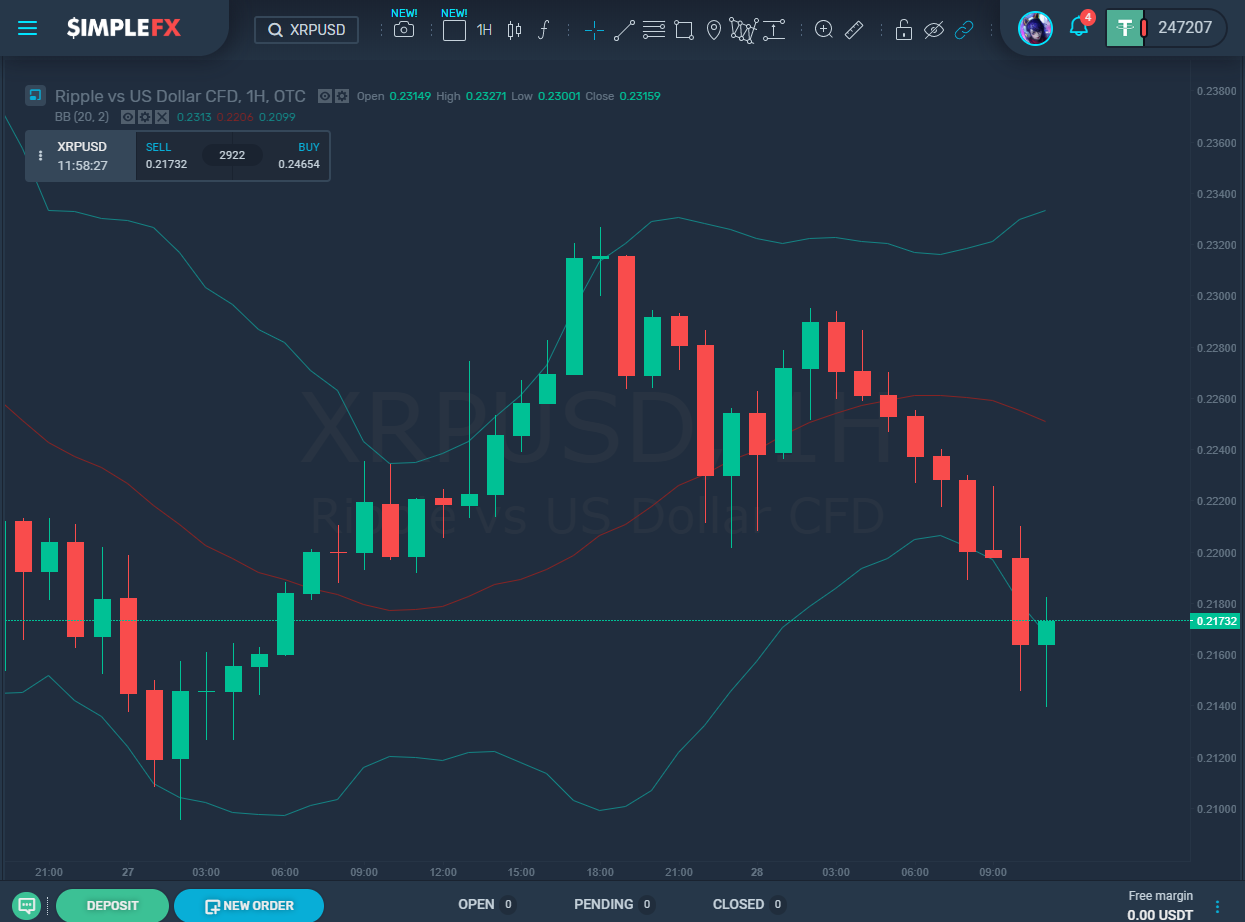Ripple outperformed struggling bitcoin yesterday. This was the result of the partnership with Azimo and Multiple South Korean Firms to Improve International Payments in Asia. Take a close look at this project as it may determine the long term value of the third-largest cryptocurrency.
[button link=”https://app.simplefx.com/login” size=”medium” target=”new” text_color=”#eeeeee” color=”#df4444″]SELL XRPUSD[/button] [button link=”https://app.simplefx.com/login” size=”medium” target=”new” text_color=”#eeeeee” color=”#3cc195″]BUY XRPUSD[/button]
Ripple is using its blockchain technology to further its presence in the Asian remittance transfer industry. They have recently partnered with European Azimo to tap into the Filipino money transfer market accurately. They have also cut deals with several South Korean companies to capitalize on their emerging fintech industry.

Ripple was one of the frontrunners when it came to using blockchain technology to transfer real money, as well as cryptocurrency. XRP is their native cryptocurrency, which also happens to be the third-most powerful cryptocurrency.
Azimo was founded in 2012 and is used to transfer money across the globe. They currently send money to over 200 different countries across the world and aim to make their services faster and more convenient than competing money transfer services.
Azimo is explicitly looking to tap into the Filipino remittance market, considered to be the fourth biggest in the world. Just last year, they sent a record $33.5 billion back to the country. Migrant workers send money back home to family members via remittance firms, and European-based Azimo wants to break into this market. By utilizing Ripple’s On-Demand Liquidity (ODL) services, Azimo can reduce the time it takes to send money, and can also reduce the cost when compared to traditional bank services.
This was not the only major partnership that Ripple forged in the past few days. They also signed deals with some significant South Korean money transfer firms: Sentbe, HanPass, and WireBarley. All three of these companies aim to facilitate the movement of payments throughout Asia, and out of the continent. South Korea is a “hotbed of fintech innovation,” and Ripple sees the primary value in capitalizing on this. The South Korean government only began licensing remittance payment providers in 2017, and in the short time since then, the market has boomed.
[button link=”https://app.simplefx.com/login” size=”medium” target=”new” text_color=”#eeeeee” color=”#df4444″]SELL bitcoin[/button] [button link=”https://app.simplefx.com/login” size=”medium” target=”new” text_color=”#eeeeee” color=”#3cc195″]BUY bitcoin[/button]
Coinone Transfer partnered with Ripple in 2018 and served as the perfect example of a successful remittance firm that has thrived using Ripple’s blockchain network. The value of payments moving across the network has grown by 50% every month since they joined Ripple, with no signs of slowing down.
This comes at the same time that Ripple is facing a class-action lawsuit in America. The lawsuit was filed by XRP buyers and states that Ripple failed to abide by security laws. It alleges that XRP, the cryptocurrency native to Ripple, is unregistered security and that Ripple artificially drove demand up. Ripple attempted to have the lawsuit dismissed back in 2019. A judge found yesterday that although some of the accusations were unfounded, Ripple still faces some of the charges. This lawsuit has the potential to end XRP as a thriving cryptocurrency. If a court finds that it is indeed unregistered security, it will be delisted from crypto exchanges, and its value would fall drastically. It is perhaps wise then, for Ripple to branch out now.